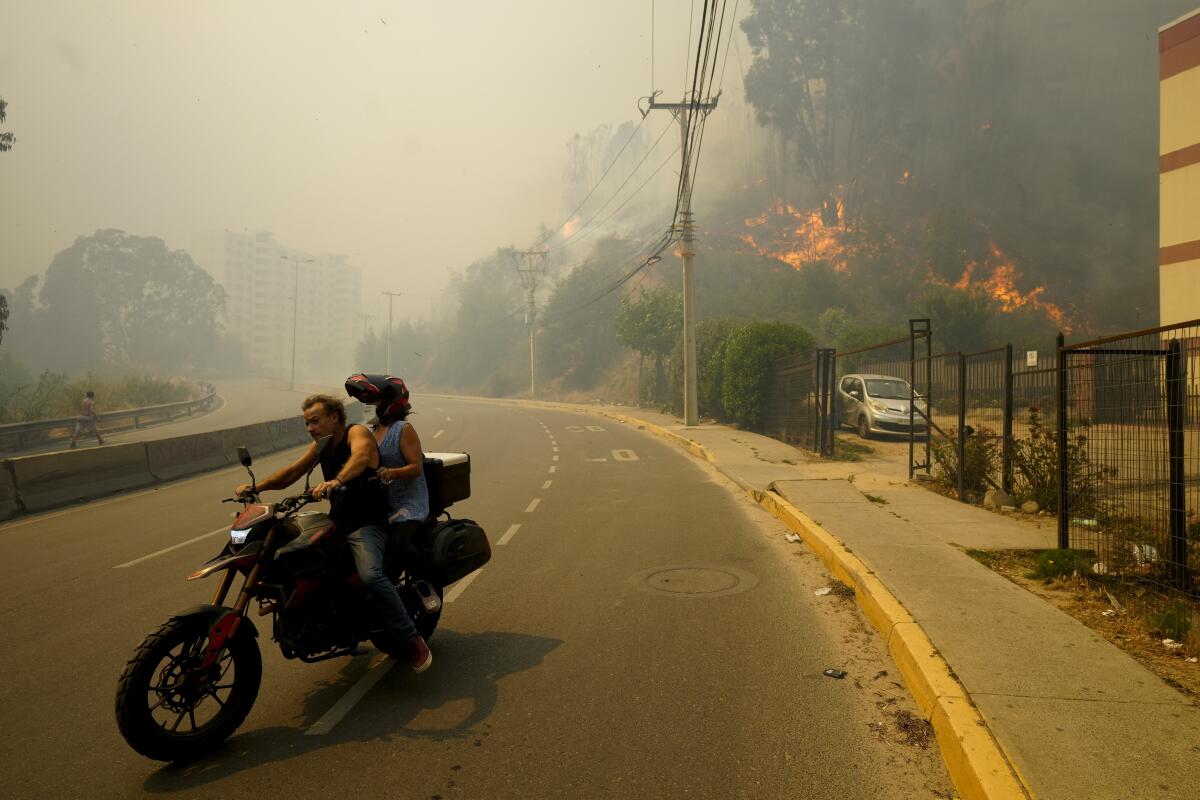How climate change contributes to wildfires like Chile’s

At least 131 people have been killed by wildfires in central Chile, leading its president to declare two days of national mourning. The devastation comes soon after Colombia declared a disaster over wildfires. Scientists say climate change makes the heat waves and drought now hitting South America more likely — and both contribute to wildfires by drying out the plants that feed the blazes.
What’s happening in Chile?
The fires in Chile came amid a heat wave that pushed temperatures in the capital, Santiago, to nearly 100 degrees. Extreme heat bakes moisture from wood, turning it into ideal fuel. Fires take hold more rapidly, and also burn with more intensity. Just a few extra degrees can be a tipping point that makes the difference between a mild fire season and a severe one.
Edward Mitchard, a forests expert at the University of Edinburgh School of Geosciences in Scotland, said climate change “makes the world hotter, which means that plants evaporate more water through them and soils get drier.”
It takes only a few days of very dry, hot weather for leaves to feel crisp and dry, he said. “That’s fuel that burns very well,” he said, adding: “Drier soil means fires are hotter and last longer.”
A Nature study showed that fire seasons are an average of 18.7% longer because of climate change.
What role does global weather cycles play?
The increased number of droughts as global rain cycles are interrupted means whole regions can be left unusually parched and more vulnerable to ignition.
“Climate change has made droughts more common,” said Mitchard. “And that’s especially happened in South America this year.
“We’ve had the most extreme drought ever recorded in the Amazon basin, and if you have droughts in the Amazon basin, you also get less rainfall in the south of South America.”
In Chile’s case, some unusually heavy rains last year are thought to have increased the growth of brush that makes perfect kindling for fires.
On top of this has come the El Niño weather pattern, the natural and periodic warming of surface waters in the Pacific that affects weather around the globe. In South America, it’s meant increased temperatures and drought this year.
Climate change makes stronger El Niños more likely, said Mitchard, and droughts caused by it are likelier to be more intense. Last month, Colombia’s government declared a disaster over dozens of wildfires associated with the weather phenomenon.
And the huge amount of carbon released by forest fires also increases global warming.
Are forest fires getting worse?
The World Resources Institute used satellite data to calculate that wildfires now destroy about 11,500 square miles of forest annually, an area about the size of Belgium and about twice as much as 20 years ago.
And the Intergovernmental Panel on Climate Change has found that globally, extreme heat waves happen five times more often because of human-caused global warming. Fire seasons are thus drier with higher temperatures.
More to Read
Sign up for Essential California
The most important California stories and recommendations in your inbox every morning.
You may occasionally receive promotional content from the Los Angeles Times.










